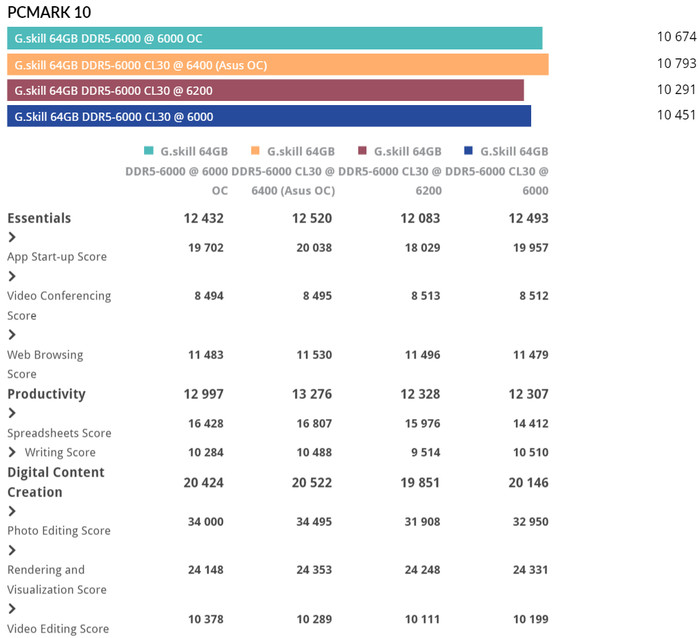G.skill Trident Z5 Neo RGB DDR5-6000 64GB CL30
2. Tests
For our tests, we used the following test system
- AMD 7950X CPU + Noctua NH-U12A Chromax.black (2x120mm fans)
- Asus ProArt X670E-CREATOR WIFI Motherboard with the latest BIOS installed (2007 AGESA 1.1.7.0 PatchA)
- MSI 4090 Suprim X Graphics Card with the latest Nvidia Drivers installed
- Samsung 980Pro 1TB with the latest BIOS NVME SSD
- Seasonic Vertex GX 1000W Power Supply
- Dell S2721QS 4K Monitor @ 60Hz
- Windows 11 Pro Edition + latest updates installed
- Test Stability:
- quick testing 30min OCCT v12 Memory Test
- stable testing Testmem5 absolute(01102021)@anta777.cfg (3 cycles)
Both modules were installed at the B2/B4 channels suggested by the motherboard vendor. We had to manually perform ClearCMOS to get everything started and the memory training for the DDR5 platform with the Asus motherboard isn't long, the first boot came around 20 seconds, and the first power up. After that point, the system is much faster at boot.
Using the free latest version of the Thaiphoon Burner which includes more information about the used modules. The G.skill Trident Z5 Neo RGB DDR5-6000 modules come from G.skill:

After getting the first boot, the Asus motherboard recognized and set the memory initially at DDR5-4800MHz CL40 1.10V, without enabling any EXPO/XMP profiles. Under the BIOS motherboard, we can set the EXPO / XMP profile, for the AMD system there is only one choice, DDR5-6000 CL30-40-40-96 (EXPO Profile).



From our testing, you can get tighter timings at 6000MHz with CL30-36-36-36 and the same 1.40V. Note that you may get worse or better timings depending on your system and voltages.

Asus also offers a built-in profile for Hynix memory modules that has much higher sub-timings and proved to be stable enough. You will find it under Ai Tweaker->DRAM Timing Control -> Memory Presets. It's possible that more tweaks are possible for even higher performance.

At 1.40V the temperatures weren't as high as would expected (remember open air testbed)

Here are some tests we performed:
AIDA64 Cache And Memory Benchmark (v7.20.6835)
The highest memory performance comes from the 6000CL30 (Asus OC profile), which seems to boost high performance, compared with stock settings. The AIDA64 Cache benchmark reports around 63.20ns for this profile as well, which explains the high-performance increase.

MemoryMark (Performance Test 10.2 Suite)
This test gives an overall score for the installed memory, the 6000CL30 Asus OC profile gave a high score of 4322 points.

Passing to the well-known GeekBench, this software tests the performance either in single or total cores, and as we can see there is a performance difference in both single/multi-core index scores.

We used the latest version of the well-known PCMark10 and we saw some performance differences in the total overall score, after setting the various memory frequencies of the tested memory. The 6000 CL30 (Asus OC) gave the highest ever score we saw under PCMark10 with 10.793 points, and the "normal" DDR5-6000 CL30 gave around 10.451 points. Leaving the same timings and increasing frequencies (like 6200MHz), seems to decrease scores so it's not advised.

Comparing the G.Skill Trident Z5 Nero RGB DDR5-6000 CL30 with other 64GB kits, since it has lower timings, performance will be better in all cases.























